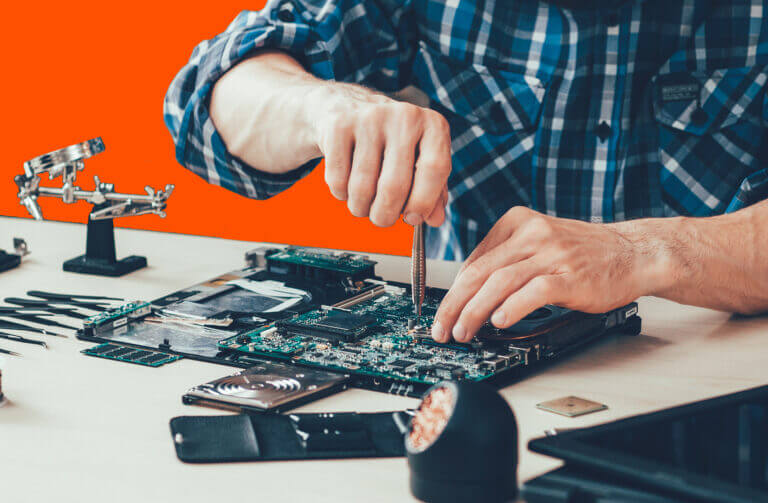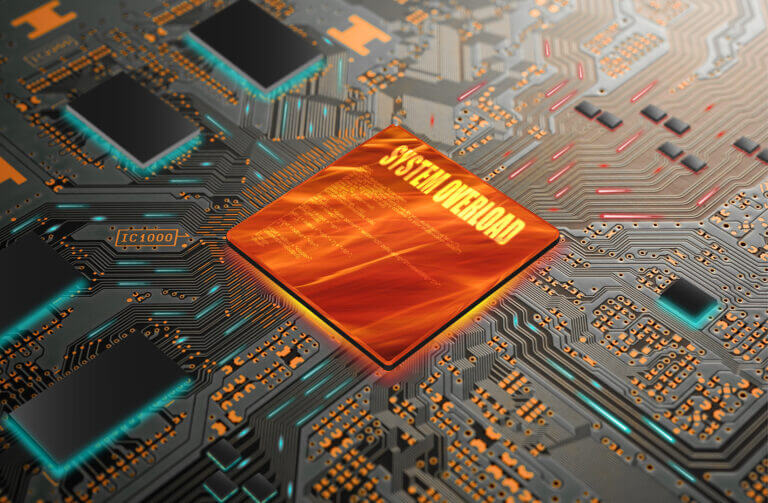Summary
The four main types of data storage include SSDs, HDDs, hybrid storage, and flash. Pure Storage all-flash arrays offer improved density and efficiency, smart data placement, durability, improvement over time, and simplicity.
Nobody likes to compromise, especially when it comes to their tech. But in today’s IT world, compromise is an all-too-common element of getting things to work as best as possible for the least amount of money.
Pure Storage® has dedicated many years and untold engineering hours to finally resolve “the compromise effect” in data storage by finding a way to do data storage differently (read, “better”). To that end, let’s look at the four main choices for data storage right now—what defines them, how they differ, and why Pure Storage’s version of all-flash arrays represents the next chapter in the evolution of how data is stored.
Read the NAND Research Report: Tackling IT Complexity With Simplified Enterprise Storage
SSDs vs. HDDs
SSDs and HDDs are the old standbys of data storage. We’ve covered the key differences between SSDs and HDDs before, but as a quick recap:
- SSDs are smaller, circuit-based devices.
- HDDs are spinning platters.
- SSDs are smaller (as small as a stick of gum), making them more portable and less damage-prone.
- SSDs can’t store as much data as HDDs.
- Since they’re not limited by spinning platters, SSDs can also be up to 14 times faster than HDDs.
While SSDs cost more than HDDs, this isn’t as cut and dry as it may seem when you look at it from a total cost of ownership (TCO) perspective.
What about Hybrid Storage?
We’ve covered hybrid data storage, too, but to recap:
Hybrid storage combines SSDs with HDDs in an effort to provide high performance at an affordable price. However, hybrid storage comes with potential issues.
First, managing a hybrid storage environment can be complex. Administrators need to carefully allocate data between different storage tiers based on access patterns and performance requirements. This requires sophisticated storage management software and expertise, potentially increasing administrative overhead.
Second, in a hybrid storage system, the amount of SSD storage available is typically limited compared to dedicated SSD solutions. This can impact the performance of workloads requiring high-speed access to large data sets, which can lead to performance bottlenecks. Balancing data placement and optimizing performance across different storage tiers can be challenging.
Lastly, while hybrid storage solutions can provide a balance between performance and cost, they may still be more expensive than traditional HDD-only solutions.
And Flash?
Let’s first define flash and distinguish it from SSDs, as the two are often (incorrectly) used interchangeably.
Flash is a data storage technology, while SSDs are a data storage device. Not all storage devices using flash memory are classified as SSDs..
Flash is a silicon chip-based data storage medium that can be erased and written to with electricity.
Flash is:
- Fast: As the name implies, flash is speedy.
- Non-volatile memory: It retains the information that it stores even when the power is off.
- Rewriteable: It is useful for storing data that changes frequently (unlike, for instance, a CD or DVD).
Flash also has no moving parts, which makes it far less likely to break or fail.
Pure Storage DirectFlash Modules: The Future of Data Storage
An “all-flash” array is simply an array (i.e., set) of data storage devices (SSD or otherwise) that use flash technology.
Refer back to the aforementioned disadvantage of SSDs: their relatively low data storage capacity compared to HDDs.
Pure Storage was founded on the belief that the future of the data center was all-flash without the storage inefficiencies of SSDs.
Enter DirectFlash®.
Pure Storage learned that all-flash systems work best when they are built from the ground up for all-flash, which means eliminating parts designed around legacy interfaces.
Pure Storage’s DirectFlash software and hardware technology removes many of the bottlenecks and redundancies of traditional SSDs by giving control directly to Purity, the operating system controlling Pure Storage FlashArray™ and FlashBlade® products.
Via Purity, the software “talks” directly to the custom DirectFlash Modules instead of through the SSD translation layers. Rather than forcing every SSD to perform its own wear-leveling, garbage collection, and overprovisioning, Purity performs these functions in software at the array level.
This has massive advantages for data storage over traditional all-flash SSD arrays, including:
- Improved density and efficiency: Our DirectFlash Modules deliver two to three times better storage density and consume from 39% to 54% fewer watts per terabyte than our closest competitors today.
- Smart data placement: Instead of each SSD making decisions about data placement and media management in a vacuum, Purity knows about all ongoing and scheduled system tasks such as current IO activity, data reduction operations, pending garbage collection cycles, and overall array workload and health. This allows Purity to make much smarter placement and scheduling decisions than a single drive could do on its own.
- Durability: Since they don’t have to do any garbage collection or write amplification, DirectFlash Modules outperform and outlast their commodity counterparts. Fewer writes means less wear and longer drive life spans. Fewer writes also means more IO cycles are available to service “real” client IO. Furthermore, because Purity knows about current IO activity and has visibility into the entire system, it’s never surprised by one of these program/erase cycles blocking access to data.
- Improvement over time: Because Purity performs all the media management tasks in software, this software can improve over time via aggregation and analysis of the software’s data to improve how the software works in the real world.
- Simplicity: DirectFlash Modules don’t require complex controllers and large amounts of RAM to do all this work on their own. This makes them simpler, more reliable, and more efficient. We can also scale the size of our drives with advances in NAND flash fabrication technology without needing to increase drive complexity or cost. What this means for customers is that their systems will have more performance, consistency, reliability, and longevity than other SSD-centric all-flash or hybrid systems.
The simplicity part is key.
Learn more about the challenges facing today’s data storage administrators and how simplified enterprise storage can reduce IT complexity and costs.
![]()






